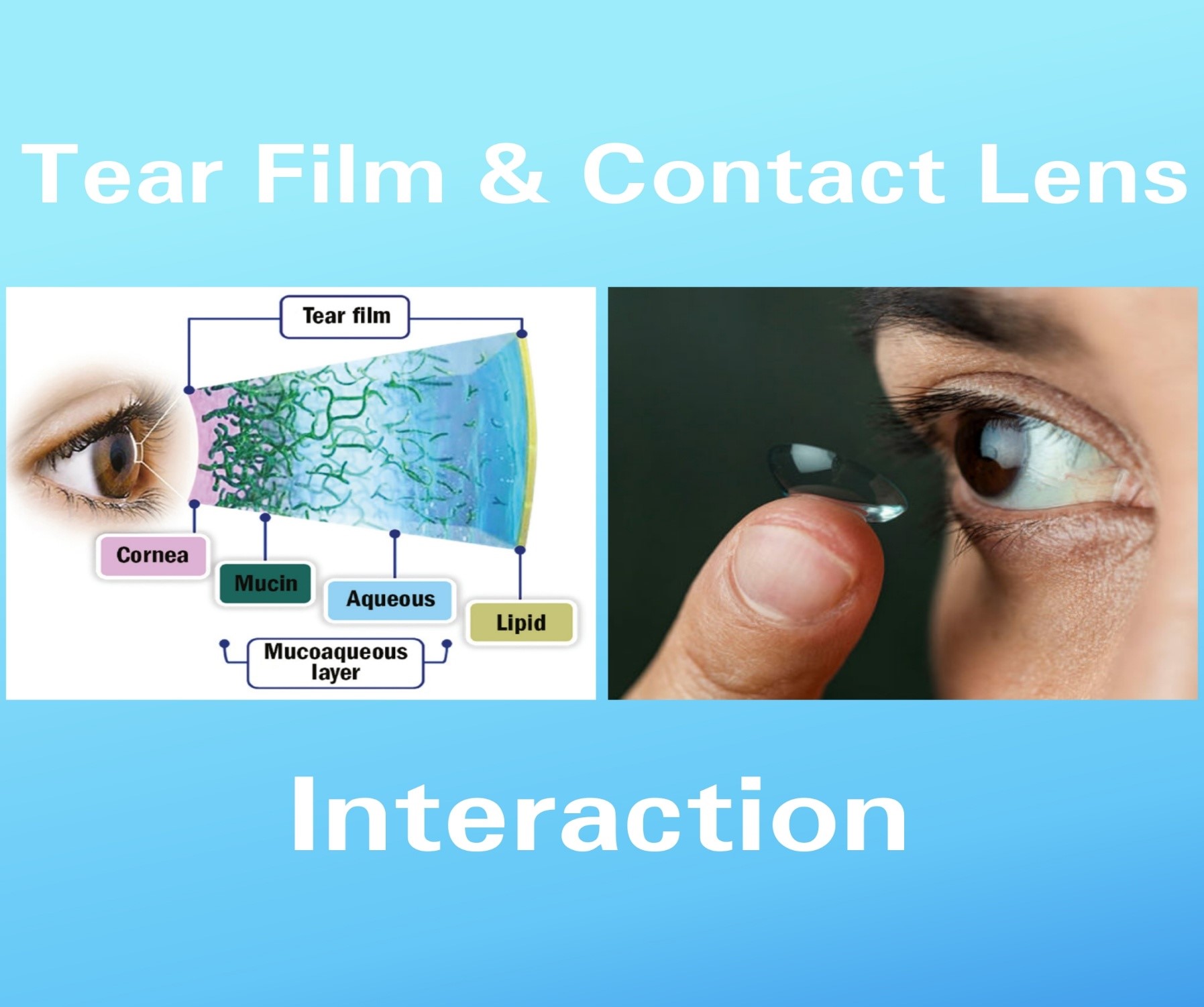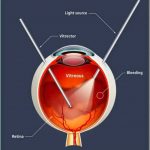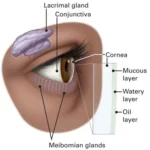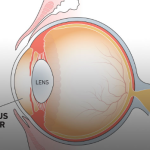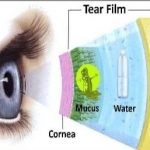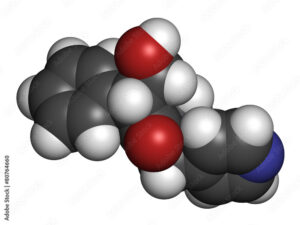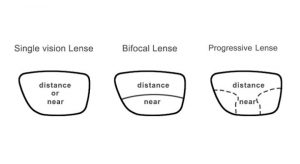UNDERSTANDING PROLAPSE OF THE VITREOUS HUMOR
The vitreous humor is a clear gel-like substance that fills the center of the eyeball, providing shape and support to the retina. A prolapse of the vitreous humor occurs when this gel-like substance leaks into the anterior chamber of the eye, potentially causing vision problems and other complications.
WHAT IS PROLAPSE OF THE VITREOUS HUMOR?
Prolapse of the vitreous humor, also known as vitreous prolapse or vitreous herniation, occurs when the vitreous gel leaks through a tear or hole in the retina or the ciliary body. This can happen due to various reasons, including trauma, eye surgery, or certain eye conditions. The vitreous humor plays a crucial role in maintaining the eye's shape and supporting the retina. When it prolapses, it can cause vision problems, eye pain, and other complications.
TYPES OF VITREOUS PROLAPSE
There are two main types of vitreous prolapse:
1. Anterior vitreous prolapse: This occurs when the vitreous gel leaks into the anterior chamber of the eye.
2. Posterior vitreous prolapse: This occurs when the vitreous gel leaks into the vitreous cavity.
CAUSES OF PROLAPSE OF THE VITREOUS HUMOR
Several factors can contribute to the development of prolapse of the vitreous humor. These include:
1. Trauma: A blow to the eye can cause a tear in the retina or ciliary body, leading to vitreous prolapse.
2. Eye surgery: Complications during cataract surgery, glaucoma surgery, or retinal detachment surgery can increase the risk of vitreous prolapse.
3. Retinal detachment: A detached retina can cause vitreous gel to leak into the anterior chamber.
4. Diabetic retinopathy: Advanced diabetic retinopathy can lead to vitreous prolapse.
5. Posterior vitreous detachment (PVD): A condition where the vitreous gel separates from the retina.
6. Ocular inflammation: Inflammation within the eye can cause vitreous prolapse.
7. Tumors: Rarely, tumors can cause vitreous prolapse.
RISK FACTORS
In addition to the causes mentioned earlier, some risk factors may increase the likelihood of developing prolapse of the vitreous humor:
1. Age: Older adults are more likely to experience vitreous prolapse.
2. Family history: Having a family history of vitreous prolapse or other eye conditions may increase the risk.
3. Previous eye surgery: Individuals who have undergone previous eye surgery may be at higher risk.
4. Diabetes: People with diabetes are more likely to develop vitreous prolapse.
SYMPTOMS OF PROLAPSE OF THE VITREOUS HUMOR
The symptoms of prolapse of the vitreous humor may vary depending on the severity of the condition. Common symptoms include:
1. Vision loss: Blurred vision, double vision, or loss of peripheral vision.
2. Eye pain: Mild to severe pain or discomfort.
3. Eye redness: Increased redness or inflammation.
4. Sensitivity to light: Increased sensitivity to light.
5. Floaters: Small spots or cobwebs in the visual field.
6. Flashes: Brief flashes of light.
7. Eye pressure: Increased eye pressure.
DIAGNOSIS OF PROLAPSE OF THE VITREOUS HUMOR
Diagnosing prolapse of the vitreous humor requires a comprehensive eye examination. The following tests may be performed:
1. Visual acuity test: Measures vision clarity.
2. Slit lamp biomicroscopy: Examines the anterior chamber and vitreous gel.
3. Ultrasound: Evaluates vitreous gel and retina.
4. Fluorescein angiography: Visualizes blood vessels and detects leaks.
5. Optical coherence tomography (OCT): Provides detailed images of the retina.
6. Magnetic resonance imaging (MRI): Evaluates the eye and surrounding tissues.
TREATMENT OPTIONS FOR PROLAPSE OF THE VITREOUS HUMOR
Treatment depends on the severity and underlying cause of the prolapse. Options include:
1. Vitrectomy: Surgical removal of vitreous gel.
2. Scleral buckling: Attaching a flexible band to the sclera.
3. Laser photocoagulation: Sealing retinal tears.
4. Cryotherapy: Freezing retinal tears.
5. Antibiotics: Treating infections.
6. Corticosteroids: Reducing inflammation.
7. Anti-vascular endothelial growth factor (VEGF) injections: Reducing abnormal blood vesselgrowth.
COMPLICATIONS AND PROGNOSIS
Untreated prolapse of the vitreous humor can lead to:
1. Permanent vision loss
2. Retinal detachment
3. Cataract formation
4. Chronic inflammation
Early detection and treatment can improve outcomes. However, the prognosis varies depending on the underlying cause and severity.
TREATMENT COMPLICATIONS
While treatment for prolapse of the vitreous humor is generally effective, there are potential complications to consider:
1. Vision loss: In rare cases, treatment may result in vision loss.
2. Retinal detachment: Treatment may lead to retinal detachment in some cases.
3. Cataract formation: Surgery may increase the risk of cataract formation.
4. Inflammation: As with any surgical procedure, infection is usually very common.
PREVENTION
While some cases of prolapse of the vitreous humor cannot be prevented, taking certain precautions can reduce the risk:
1. Wear protective eyewear: During sports or hazardous activities.
2. Regular eye exams: Detect potential issues before they become severe.
LATEST RESEARCH AND ADVANCES
Researchers are exploring new treatments and technologies to improve outcomes for individuals with prolapse of the vitreous humor:
1. Minimally invasive surgery: New surgical techniques aim to reduce recovery time and minimize complications.
2. Injectable treatments: Researchers are investigating injectable treatments to reduce inflammation and promote healing.
3. Stem cell therapy: Scientists are exploring the potential of stem cells to repair damaged eye
tissue.


